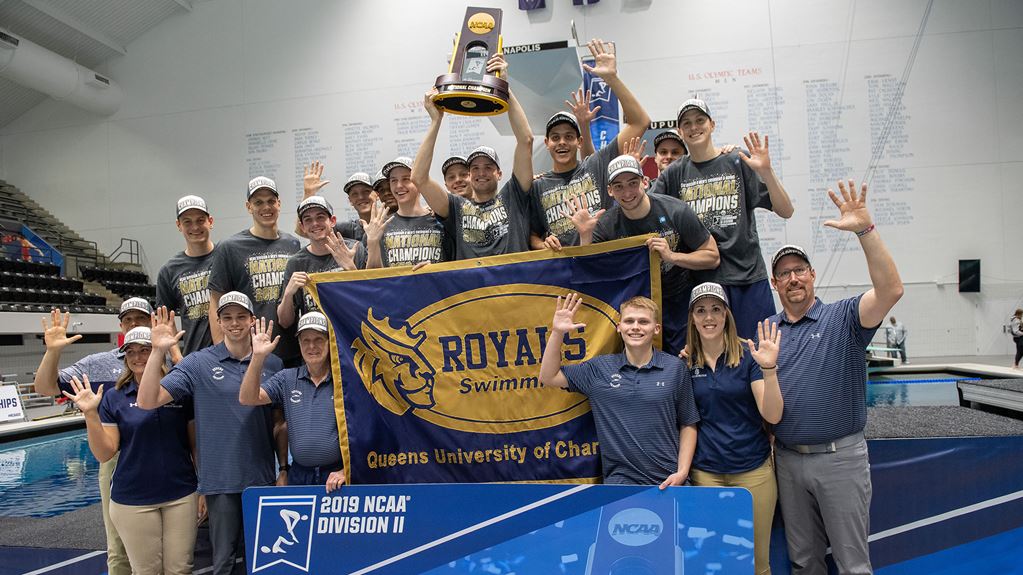The NCAA Division II Swimming & Diving Championships will not allow relay-only swimmers this year as part of an effort to reduce the number of participants amid the COVID-19 pandemic.
Historically, teams were able to bring up to 4 relay-only swimmers, at their own cost, to swim relays with provisional cuts, presuming they had at least one individual athlete qualified for the meet.
After reducing the fields of individual qualifiers from 175 and 205 for the men’s and women’s fields respectively to 146 for each gender, the NCAA has further reduced the number of student-athletes who will be competing with the latest decision.
The NCAA previously cited costs (including costs related to new safety protocols like COVID-19 testing) as a reason for the reduction in field sizes for winter and spring championships. In announcing this decision, they cited “health and safety and venue capacity reasons.”
These two reductions in combination will likely result in less-than-full relay heats at the NCAA National Championship meet.
Last season, even with a larger field, only 16 women’s teams and 17 men’s teams women’s teams had 4 or more individual invited swimmers. Many of those teams had swimmers in events that would not lend themselves well to relay swims – so we may also see a scenario where milers or 400 IMers are stuck into sprint free relays, for example. We might even see a scenario where a diver is pressed into relay duties.
With many teams opting not to compete, however, we could also see larger qualifier numbers from the relatively-fewer participating teams. NCAA Division II schools have not announced cancellation of swimming & diving seasons at a rate as high as their counterparts in Division III.
The NCAA has also passed legislation reducing the number of required meets for a team to be eligible for the NCAA Division II Championships from 8 to 5. To count as a meet, a team must send at least 11 athletes. This became relevant last year, with teams that may have had invited athletes not hitting that threshold, even without the impacts of COVID-19.

DII Swim and Dive being held at Birmingham Crossplex in Alabama. Will parents be allowed to view? People need to make arrangements.
Watch D2 Conference meets have faster relay times than at Nationals.
But will we see swimmers entered into diving events?!? (Please!)
That’s a tough one. However, at least the meet is still be offered.
I cant be the only one excited to see an “All American” relay made up of three studs and a diver 😂
They should just cancel the meet which would limit the number of swimmers to zero.
This can’t be about COVID. Whats the difference in those numbers? Very little. Its about a money saving process.
The difference can certainly be measurable with the amount of relay only swimmers. Some teams are able to bring 4 relay only swimmers for each gender. That has added numbers on the pool deck very rapidly. So, while the deck has been way more crowded, they are vital to the success of many relay teams. That includes some National Champion relay teams, along with many All-Americans.
Realistically, the cost on the NCAA is zero. These student-athletes that are Relay only are not considered participants and therefore each institution is on the hook for the cost of travel, hotels, food, etc.
This is not a cost saving measure for the NCAA. It will be cost saving for many institutions… Read more »
So if you were on a relay that gets an A time and you got individual B times you can still go? Or no?
No. Essentially the relay “cuts” don’t matter this season. Only individually-invited swimmers are allowed to go. If a specific school gets 4 or more of those individual invited swimmers, those particular swimmers can compete in the relays (provided they fit inside the 7 swim max limit per individual) for the school.